CCJ Innovators profiles carriers and fleets that have found innovative ways to overcome trucking’s challenges. If you know a carrier that has displayed innovation, contact CCJ Editor Jason Cannon at [email protected] or 800-633-5953.
Accelerating an already booming consumer trend to buy online, COVID-19 put an increasing number of less-than-truckload (LTL) carriers on home-delivery duties, and online shoppers – spoiled by Amazon’s near real-time visibility into its supply chain – posed a challenge for a trucking industry that largely was beholden to ink and paper and manual bills of lading (BOLs).
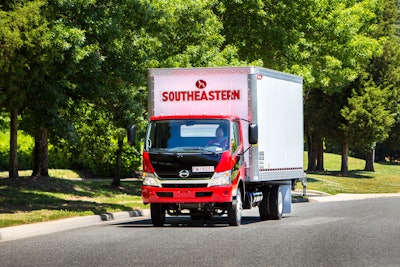 SEFL rolled out its final-mile service across all the company’s 89 service centers in September via a fleet of more than 400 last mile trucks.
SEFL rolled out its final-mile service across all the company’s 89 service centers in September via a fleet of more than 400 last mile trucks.Having first launched its own shipment processing system technology almost 30 years ago, Southeastern Freight Lines (SEFL) upgrades it on an ongoing basis to meet market demands. And in the throes of a pandemic, the market was demanding more digitization.
SEFL (CCJ Top 250, No. 30) as of this year digitally scans its BOLs, said Woody Lovelace, the company’s senior vice president and chief information officer. “Not only does that gather more information about the details of that shipment earlier, [but also] the sooner that we know all the parties of that freight bill, the sooner we can start providing customers with visibility,” he said.
That data is fed automatically to the carrier’s dock operations, and “as drivers come back off the street, based on the details of that load,” Lovelace said, “we can make door suggestions that limits the space or reduces the distances between the unload door and the load door.”
The platform also has enabled 99.6% invoice accuracy, as all that data feeds back into a centralized billing location.
Lovelace said the electronic pickup (ePup) and delivery (ePod) process has removed more than 10 million pieces of paper out of SEFL’s operations. “Not only are you printing them, but you’re handling them, you’re filing them and you’re scanning them, and all the things that go along with that,” he said. “With moving into COVID, it positioned us perfectly to do a contactless delivery. The customer doesn’t have to touch a piece of paper. They don’t have to touch a handheld. In fact, they don’t even have to be there. We take a photo of where we leave the shipment. We automatically send that proof of delivery to them immediately.”
The final-mile frontier
The software platform also has enabled SEFL to identify final-mile deliveries more accurately and more timely while helping educate final-mile customers on what to expect from their delivery. It also allows customers to handle appointment and delivery requirements at their convenience online.
SEFL rolled out its final-mile service across all the company’s 89 service centers in September via a fleet of more than 400 last mile trucks, offering residential deliveries as well as deliveries to freestanding retail stores, places where a dock is not available and strip malls with limited access, among other locations.
The Lexington, South Carolina-based carrier strategically built out its final-mile service over time, starting with a small number of trucks in select markets to test both efficiencies and market demand. Coupled with an increase in demand, final-mile residential shipments represented about 2.5% of the company’s shipments pre-COVID, but that since has ballooned to 4.5%, Lovelace said.
Additional features include real-time tracking with 100% visibility; automatic delivery status updates; APIs that allow shippers to integrate their e-commerce shopping carts to the SEFL system (rate quotes, pickup requests, tracking, etc.); the ability to use emails and phone numbers of residential customers to send links for self-appointments, which allows the customer to request a contact before arrival and grant SEFL permission to deliver without being present; and the driver taking a picture to confirm delivery when the customer is not present.
Technology affluence has enabled a 99.3% on-time service rate to-date in SEFL’s final-mile segment.
Reach out (digitally) and don’t touch someone
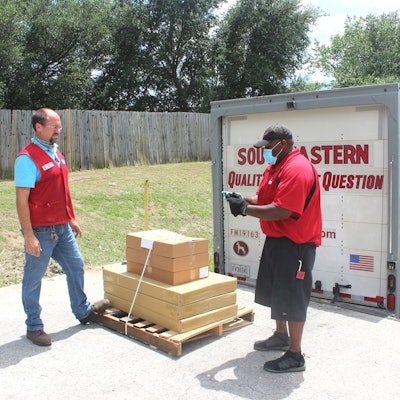 Digital communication has enabled SEFL to provide more information to the consumer on how an LTL shipment works, and it also has emerged as a preferred method as more end-consumers filter their phone calls.
Digital communication has enabled SEFL to provide more information to the consumer on how an LTL shipment works, and it also has emerged as a preferred method as more end-consumers filter their phone calls.In its final-mile process, SEFL sends texts and emails to its residential customers, enabling them to schedule a delivery time and location while also offering them the option to pick the item up themselves at a SEFL terminal.
Lovelace said digital communication has enabled SEFL to provide more information to the consumer on how an LTL shipment works, and it also has emerged as a preferred method as more end-consumers filter their phone calls.
“We actually have an AI system where we were using voice calls to try and make those appointments, but they were marginally successful because people didn’t answer the phone,” he said. “Now, with the text and the email, they can consume that information the way they want to. They can process it in the evening at their convenience.”
Customers get text and/or email notifications the afternoon the carrier first bills the shipment and recognizes the product is bound for a final-mile customer. “Historically, when you’re talking about the LTL business – and we’re a next-day regional specialist – the minute that a customer asks for an appointment at destination, they typically have inserted a delay in transit time,” Lovelace said. “We have to have an opportunity to reach them to make the appointment instead of that shipment flowing on to the street tomorrow. By notifying that customer that first evening and them making that appointment, we have a good chance of actually going straight out and delivering it tomorrow instead of staging it.”
Texts and emails notify customers that SEFL has their shipment and include information about the shipment (like the number of pieces and weight) and where it’s coming from, “and then you’re really responding to available appointments,” Lovelace said, adding that customized appointment windows can vary by location and destination. “If they were a good distance away from a destination service center, we may offer them the windows of appointment that would be later in the day.”
As part of its two-way digital outreach to the customer, SEFL also asks information that will be critical for the driver, such as how much access they will have to the delivery site. “Is it a gated community?” Lovelace said. “Is there any particular requirements there? And whether or not [the customers] need to be there when we deliver it, so we get permission from them to leave it if they can’t be there.”
There is also the option to speak to a customer service representative, a team of experts who also will get involved if the customer doesn’t respond to text or email outreach.
“Our customer service associates see the status of this appointment,” Lovelace said. “After a couple of days with nothing scheduled, our own people will start initiating contact with the customer.”
Lovelace said it’s common to get a mobile number from e-commerce but noted it’s rare to receive email addresses from the shipper. However, he believes that is something that will shift over time as retailers better understand the value of providing more information to the carrier about the customer. “It’s one more point of contact, and the key there is an automated form of contact, not something that takes their time, takes our time playing telephone tag,” he said. “Another avenue by which we can interact with them electronically.”
Enabling more seamless interaction, Lovelace said, has allowed the carrier to replicate – on some levels – the kind of experience consumers have become accustomed to when buying from online retailers.
“More palletized, true LTL freight is finding itself in this private residence space,” he said. “[The use of technology is needed], really, to do it efficiently and to meet the needs and expectations of the e-commerce customer. They expect a similar experience for LTL as they would for a parcel or a mail package.”
That layer of blockchain-like detail is something Lovelace believes only will increase as it ripples through the LTL segment, requiring carriers to leave more GPS breadcrumbs and add more visibility to their shipments.
“Typically, the LTL driver is not like an Uber driver that you can see coming around the corner, but I can see it becoming just that,” he said. “Visibility is going to be key.”

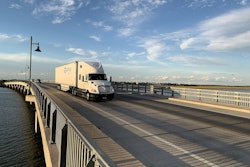
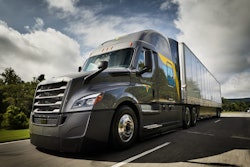
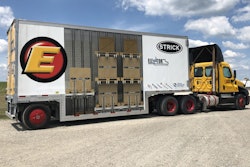
![Halvor Lines- Bonnie 12[2]-2020-07-17-14-10](https://img.ccjdigital.com/files/base/randallreilly/all/image/2020/07/ccj.Halvor-Lines-Bonnie-122-2020-07-17-14-10-scaled.png?auto=format%2Ccompress&fit=crop&h=167&q=70&w=250)






